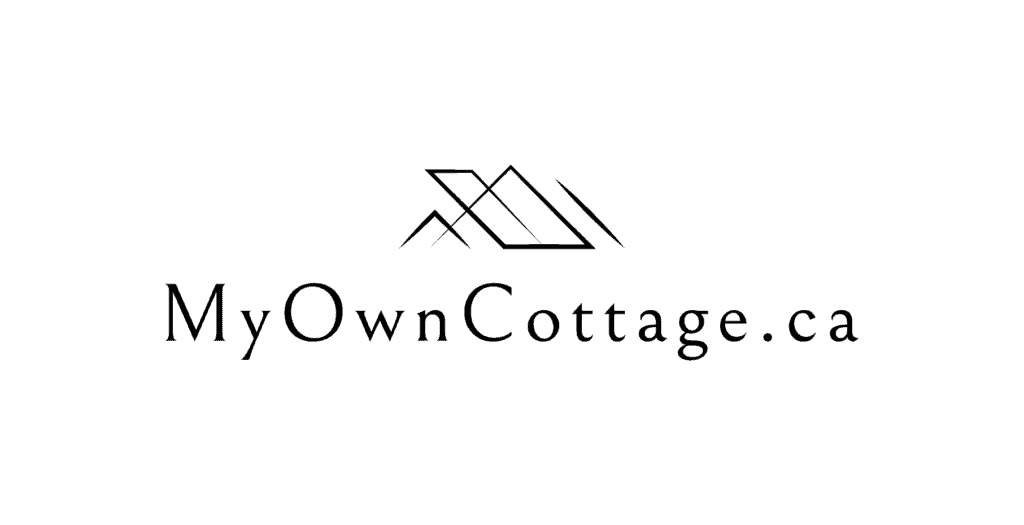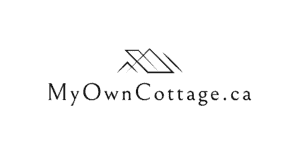What Happens If My Prefab Cottage Foundation Shifts?
What happens if my prefab cottage foundation shifts?
Learn what Ontario prefab warranties typically cover—and how to protect your investment.
What Happens If My Prefab Cottage Foundation Shifts?
If your prefab cottage foundation shifts, it can lead to serious structural damage—such as cracked drywall, sloping floors, and sticking doors—and may void your warranty if site preparation didn’t meet Ontario Building Code Part 9 or CSA A277 standards.
In Ontario, frost heave is one of the most common causes of foundation movement, particularly when insulation or drainage systems are missing or improperly installed.
📥 Download our Foundation Prep & Warranty Eligibility Checklist (PDF) — it’s what Tarion builders use during site inspections!
Warranty, Prevention & Peace of Mind for Ontario Buyers
When imagining your dream prefab cottage—open-concept living room, natural light, and a Muskoka Room overlooking Lake View—you likely don’t think about what’s beneath it. But your foundation is the backbone of your investment.
In regions like Muskoka and Haliburton, where winter temperatures regularly drop below -20°C, improper site prep can cause your modular platform to lift, crack, or tilt.
And that leads to one crucial question: Will your warranty cover it?
👉 Thinking of building soon? Book a Free Foundation Site Consultation to ensure you’re code-compliant and covered.
Let’s unpack this aspect of warranty coverage for modern prefab cottages in Ontario—and empower you with expert-backed knowledge to protect your cottage for years to come.
Foundation Movement in Ontario Cottages
Frost heave occurs when water in the soil freezes and expands, pushing the ground—and your foundation—upward.
This pressure can cause piers to shift, perimeter skirts to warp, and concrete pads to crack.
Real-World Example:
In Bracebridge, a homeowner noticed cracks in their cathedral ceiling within one year.
Although their piers were below the frost line, they skipped installing an insulated perimeter skirt.
The resulting movement voided their structural warranty. Total repair cost: $12,000.
What’s the Difference Between Frost Heave and Foundation Settling?
Frost heave is caused by freezing water in the soil that expands and lifts the foundation—common in colder climates like Ontario.
Foundation settling, by contrast, happens when soil compresses or shifts downward due to weight or erosion, causing parts of the foundation to sink.
In Muskoka, frost lines average 4–5 ft deep, requiring piers to be set well below to avoid shifting. In Nova Scotia’s South Shore, builders often use coastal-rated insulation due to variable temperatures and salt air exposure.
Knowing the difference can help you assess risk, choose the right foundation type, and avoid voiding your warranty.
How Do I Know If My Foundation Is Shifting?
Here are early warning signs of foundation movement:
Cracks wider than ¼ inch in drywall or ceilings
Floors sloping more than 1 inch every 10 feet
Windows or doors that stick or won’t align
Visible movement in piers or perimeter skirting
New gaps forming between walls and trim
Uneven exterior steps or stoops
📸 Pro Tip: Snap photos of any early warning signs and site grading. These can support your claim later.
What Do Prefab Warranties Typically Cover for Foundation Issues?
Prefab and modular home warranties typically fall into three tiers:
✅ Manufacturer Warranty (1–2 Years)
Covers workmanship and material defects from factory-controlled assembly (e.g., faulty welds or floor framing).
✅ Structural Warranty (Up to 10 Years)
Offered by Tarion-registered builders, this covers major load-bearing failures, such as cracked foundation walls or shifting base structures.
❌ Site-Specific Coverage
This is where many claims are denied. Damage from poor drainage, missing insulation, or improper grading is usually not covered unless site prep followed all guidelines.
💡 Expert Tip: Always ask for your builder’s foundation prep guide and list of approved installers to ensure you meet warranty standards.
📥 Need clarity on what’s excluded? Download the Coverage & Exclusions Guide (PDF).
Covered vs. Not Covered: Warranty Snapshot
What it comes to modern prefab cottages in Ontario, what’s covered vs. what isn’t?
| Typically Covered | Typically Not Covered |
|---|---|
| Cracked beams due to weld/factory defect | Soil erosion or frost heave |
| Uneven floors from framing inconsistencies | Improper grading or lack of drainage |
| Load-bearing wall failure from design flaw | Foundation settling from clay expansion |
⚒️ Note: My Own Cottage and other top Ontario prefab builders clearly outline these limitations in warranty documents.
Ontario Building Code & Tarion Warranty Insights
Ontario Building Code (Part 9): Requires foundation footings to extend below frost line (typically 4 feet or deeper).
Requires site-specific soil bearing tests before building.
Tarion Warranty: Offers up to 7 years of structural defect coverage if the build complies with OBC and site prep was executed correctly.
🔎 Expert Insight from a Tarion-Licensed Builder:
“Most frost-related claims are denied due to missing skirting or poor slope design,” says John Palmer, P.Eng., a registered Tarion builder with over 15 years in Northern Ontario prefab site prep.
Preventing Frost Heave: Site Prep and Drainage Tips
Here’s how to protect your Ontario prefab cottage from shifting:
✅ Grade the Lot
Ensure 5% slope away from the foundation (at least 10 feet).
Install weeping tile or French drain systems to redirect water.
✅ Install Foundation Skirt
Use an insulated perimeter skirt to block frost penetration around piers or crawlspaces.
✅ Compact Soil Properly
Backfill must meet 95% Standard Proctor Density. Ask for compaction testing if unsure.
✅ Get a Soil Survey
In clay or muskeg-rich areas (e.g., Lake of Bays), a geotechnical engineer should evaluate the site.
✅ Choose Smart Materials
Opt for screw piles or helical piers, which resist frost better than poured concrete.
🧱 Bonus Tip: Ask your builder about FPSF (Frost-Protected Shallow Foundations)—a Scandinavian technique gaining traction in Ontario prefab design.
💡 Want expert eyes on your foundation plan? Book a Free Site Inspection.
Repair Cost Comparison Table
| Issue | Repair Cost Estimate | Warranty Coverage |
| Uneven piers (minor lift) | $2,500–$4,000 | Rarely covered |
| Frost-damaged skirt replacement | $3,000–$6,000 | Conditional (site prep-dependent) |
| Full pier reset or underpinning | $10,000–$15,000+ | Covered if code-compliant build |
🛡️ Cost ranges were compiled from over 40 projects completed in Muskoka and Haliburton between 2022–2023 by Tarion-registered partners. All cost estimates are based on 2023 Ontario averages.
📊 Tip: Always compare repair estimates with warranty eligibility before proceeding.
Should I Repair or Walk Away?
| Scenario | Recommended Action |
| Minor frost movement, no damage | Monitor with yearly photos |
| Cracks and slope under 1 inch | Get a professional repair estimate |
| Recurrent structural separation | Consider foundation reset |
| Non-code-compliant foundation | Consult with warranty provider or local engineer |
The Importance of Documentation
Keep these documents to preserve warranty eligibility and ensure future resale confidence:
Foundation engineering report
Site grading plan
Drainage layout and permits
Builder’s specification sheet
Tarion enrolment certificate
Store both hard and digital copies. When in doubt, document everything during the build.
✅ Disclosure: My Own Cottage may receive compensation from verified third-party installers. We only recommend providers who meet Ontario Building Code compliance standards.
Need Help?
Don’t leave your dream home’s foundation—or finances—at risk.
Whether you’re building a custom lakeside cottage or upgrading an existing prefab, your foundation is where stability begins.
Explore warranty coverage for modern prefab cottages in Ontario firsthand with dedicated professionals.
Speak to an Expert Today
Whether you’re building a modern design lakeside retreat or updating an existing cottage with contemporary interior finishings, your foundation is quite literally where your peace of mind begins.
To get started the right way, simply book a free consultation or call us directly today at My Own Cottage.
🧑💼 Request a Free Consultation
📲 Call Us Directly: (705) 345-9337
✅ Ontario-Built | ⚡ Energy-Efficient | 🏡 Fully Customizable | 🚚 Fast Delivery
Alternatively, for your convenience, you can also simply fill out the contact form below and we’ll get back to you soon! 👇
❓ FAQ:What Happens If My Prefab Cottage Foundation Shifts?
What happens if the foundation of a prefab cottage shifts?
A shifting foundation can cause structural damage like cracked walls, misaligned doors, uneven floors, and water intrusion—potentially voiding warranty coverage if site prep didn’t meet code or manufacturer specs.
What should I do if my prefab cottage foundation is shifting?
Contact a licensed foundation repair specialist immediately; delaying can worsen damage. Stabilization methods like helical piers or underpinning may be required to prevent further movement.
Is it normal for a prefab home foundation to move?
Minor settling is normal during the first year, but visible movement, sloping floors, or wide cracks indicate a structural problem that needs professional assessment.
What causes prefab cottage foundations to shift in Ontario?
Common causes include frost heave from freeze-thaw cycles, poor drainage, expansive clay soils, tree root intrusion, and improper soil compaction during installation.
How can I tell if my foundation is shifting?
Warning signs include diagonal drywall cracks, doors that stick, sloped or uneven floors, separation between walls and ceilings, and visible cracks in the skirting or pier system.
When is it too risky to buy a cottage with foundation issues?
Walk away if repairs exceed 15% of the property’s value, involve structural reconstruction, or if the cause—like poor drainage or unstable soil—remains unresolved.
What’s the difference between settling and foundation problems?
Settling is slow, uniform, and expected; foundation problems are uneven, worsening over time, and often cause structural distortion or safety issues.
What’s the cheapest permanent foundation for a prefab or mobile home?
Concrete piers are the most cost-effective permanent foundation when properly insulated against frost and supported by well-graded drainage systems.
How much does it cost to fix a shifting prefab cottage foundation?
In Ontario, repair costs typically range from $3,000 to $15,000 depending on severity and method—helical piers or perimeter drainage often increase durability and cost.
How do I prevent my prefab cottage foundation from shifting?
Prevent shifting with proper site grading, perimeter insulation, frost-protected footings, and installing weeping tile or drainage systems to redirect groundwater.

